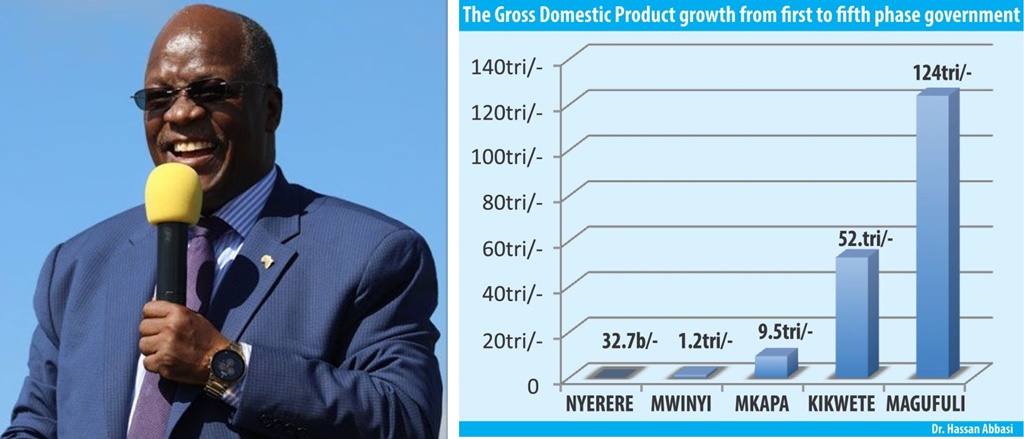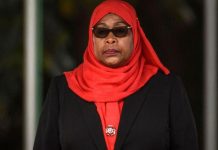Author: SYLIVESTER DOMASA
AfricaPress-Tanzania: TANZANIA’s annual adjusted GDP rose by 76.5 per cent during the last four years of President John Magufuli’s administration, according to an estimate announced by the Chief Government Spokesman, Dr Hassan Abbasi.
In his address to members of the press, at which he touched on the economic growth of the country since its independence in 1961, Dr Abbas said during Magufuli administration the economy had more than doubled thanks to auspicious measures.
Comparing the figures, the spokesman said under Mwalimu Julius Nyerere’s administration, between 1961 and 1985, the growth domestic product stood at 32.7bn/- .
Under the second phase government (1986-1995) the GDP grew to 1.2trn/-. The third phase government (1996-2005) had an annual economic growth of 9.5trn/-.
Between 2006 and 2015, GDP stood at 52.9trn/-. Dr Abbasi said from 2016 to 2019, surveys have shown that the economy registered an outstanding growth of 124trn/-, about 76.5 per cent compared with the previous administration.
“Some people are downplaying these achievements… I just want to say such people must be avoided by everyone and mostly children,” he said.
Tanzania which recently ascended into the lower-middle-income economy, achieved its vision five years ahead of schedule.
The country bordering six land-locked countries is situated to become a regional economic and transit hub and the Chief Government Spokesman says the construction sector contributed 16 per cent of such developments.
“There are other sectors which supported these milestone achievements. They include the mining sector which has recently witnessed serious transformations. Others are the services sector, information and communication,” he noted.
The developments, according to the chief government spokesman, had been diversified to reflect an increase in the gross domestic product per capita income.
He detailed that under President Magufuli, the GDP per capita rose to 1063 US dollars from 622 US dollars in 2015.
In 1961, the GDP per capita stood at 190.3 US dollars, and slightly climbed to 205 US dollars in 1995 and reached 331 US dollars in 2005. Dr Abbasi says the country’s economy is growing very fast.
The wealthiest countries in Africa by GDP are topped by Nigeria (446.543bn US dollars), South Africa (358.839bn US dollars), Egypt (302.256bn US dollars), Algeria (172.781bn US dollars), Morocco (119.04bn US dollars), Kenya (98.607bn US dollar), Angola (91.527bn US dollars), Ethiopia (91.166bn US dollars), Ghana (67.077bn US dollars) and Tanzania (62,224bn US dollars).
He further explained that the government lowered the inflation rate from 9.2 per cent in 2015 to 4.3 per cent in the financial year 2019/2020.
On average, Tanzania’s economy grew by 6.9 per cent between 2016 and 2019, the highest speed ever to be recorded.
But he was quick to note that such development was part of big plans and strategies laid down by previous administrations.
He cited for instance that revenue collections climbed from 850bn/- a month to 1.3trn/- in 2015 and 2016, respectively. In December 2019 and June 2020, revenue collection stood at 1.9trn/-.
“The African Development Bank has listed Tanzania among countries with inclusive economic growth which considers public interest, conducive investment and increasing export,” he added.
In addition, the International Monetary Fund (IMF) said Tanzania’s economy continues to be stable, growing by an average of 6 per cent and with a lower inflation rate.
“Forbes Magazine named Tanzania to have an economy growing between 6 and 7 per cent due to appropriate exploitation of its resources, including tourism between 2009 and 2017,” he told reporters.
He urged the general public to uphold the good work and keep working to ensure that every person is fully liberated economically.







